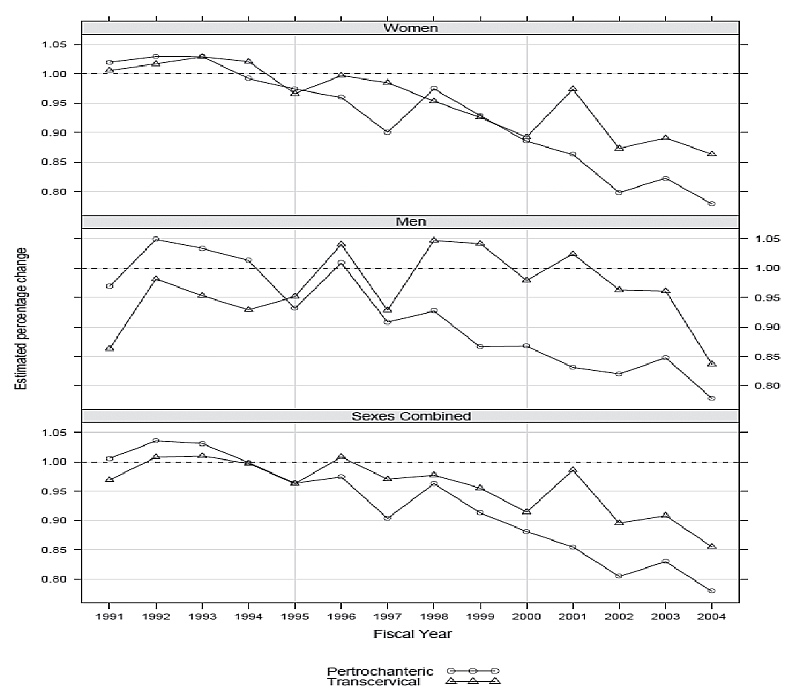
Fri., 10/15/10 Geriatrics, Paper #47, 11:03 am OTA-2010
Changes in Hip Fracture Rates in British Columbia Canada, 1990-2004
Kelly A. Lefaivre, MD; Adrian R. Levy, PhD; Boris Sobolev, PhD; Stephanie Y. Cheng, BS;
Lisa Kuramoto; Pierre Guy, MD;
University of British Columbia, Department of Orthopaedic Surgery
Vancouver, British Columbia, Canada
Purpose: Our objective was to determine whether there have been changes in the age, sex, and subtype-specific hip fracture rates in the Canadian province of British Columbia (BC) between 1990 and 2004.
Methods: Records of all persons aged 60 years and older hospitalized with hip fractures in BC between 1985 and 2004 were obtained from the Canadian Institute for Health Information Discharge Abstract Database. Only the first hip fractures were recorded, and records were excluded based on causes other than trauma (eg, metastatic disease). Age- and sex-specific rates were calculated using population denominators from Statistics Canada and direct standardization was used. Age-standardized rates allowed for comparison across years with adjustment for age distribution.
Results: There were 41,990 records of first hip fracture included, and 73% among women. Trends in age-specific rates by fracture type were similar to previous reports. Between 1990 and 2004, there has been an age-adjusted 18% decrease in hip fracture rates in women, and 19% decrease in hip fracture rates in men. The decrease was statistically more significant in femoral neck fractures in women, but not in men.

Conclusions: The decrease in age-adjusted hip fracture rates in BC between 1990 and 2004 is consistent with the fact that public health measures to decrease hip fractures are having some success.
Alphabetical Disclosure Listing (292K PDF)
• The FDA has not cleared this drug and/or medical device for the use described in this presentation (i.e., the drug or medical device is being discussed for an “off label” use). ◆FDA information not available at time of printing. Δ OTA Grant.